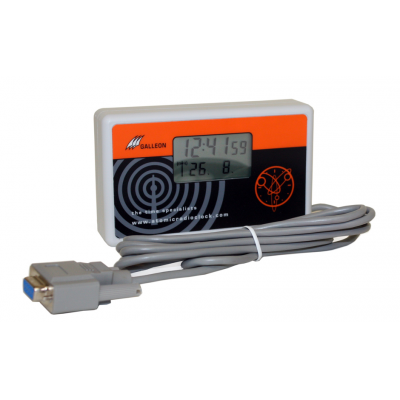Computer networks need to have accurate time. Accurate and synchronised time is essential for security, preventing errors and communicating with other devices on the network. If two computers are operating on different time scales, all sorts of problems can occur.
This can include data loss, applications failing and the whole network becoming vulnerable to unauthorised and malicious cyber-attacks.
For precise time, computer networks need to be connected to an accurate and secure time source. This enables all devices on the network to receive accurate time. One of the most common sources is the radio time synchronised receiver.
Coordinated Universal Time
In today’s world of global communication and the Internet, computer networks need to have synchronised time internally and externally with other networks that they communicate with. This is important to prevent errors in communication.
To achieve this, a global time scale was developed based on the time told by atomic clocks. Atomic clocks are the most precise form of timekeeping devices as they do not drift and are accurate to within a few nanoseconds.
The only problem with atomic clocks is that they are an expensive piece of equipment and they’re only available in physics laboratories. This is the NPL (National Physical Laboratory) in the UK and NIST (National Institute of Standards and Time) in the USA.
Radio Time Synchronisation Receiver
Fortunately, computer networks can utilise atomic clocks because these physics laboratories broadcast the time signal. Radio time synchronisation receivers are used to receive the time signal.
Once the receivers receive the atomic clock time signal, the signal can be distributed to all the devices in the network. This ensures all computers, routers and switches on the network are synchronised to the atomic clock time.
Radio time synchronisation receivers can be used with NTP (Network Time Protocol) to maintain synchronisation across the network.
Time Signals
The time signal and frequency that radio time synchronisation receivers use varies from country to country. In the UK, the signal broadcast by NPL is known as the MSF signal and it is transmitted from Cumbria. This signal is available across the UK. It is, although, susceptible to interference caused by the local topography.
In the USA, the NIST signal is known as WWVB and is broadcast from Boulder, Colorado. Other nations have their own radio transmissions, such as the DCF signal in Germany, which can be picked up by neighbouring countries.
For areas where a local time signal is unavailable due to heavy interference, there is another solution available – the GPS time synchronisation receiver. These are like the radio time synchronisation receivers, but they receive the time signal from a satellite.
This GPS signal is then distributed to the network using the same NTP protocol. The biggest advantage of a GPS time server is that a time signal is available everywhere. To receive the signal the antenna requires a clear view of the sky.
